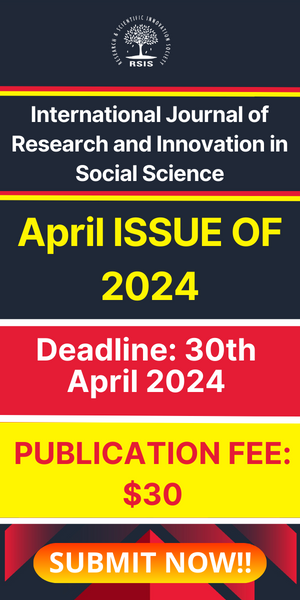Dynamic of Gross Enrolment Rates: Access and Equity of Subsidized Secondary Education in Kenya
- March 7, 2019
- Posted by: RSIS
- Category: Education
International Journal of Research and Innovation in Social Science (IJRISS) | Volume III, Issue II, February 2019 | ISSN 2454–6186
Dynamic of Gross Enrolment Rates: Access and Equity of Subsidized Secondary Education in Kenya
Dr. Bomett Emily Jepchirchir (Ph.D.)
Department of Educational Management and Policy Studies, School of Education, Moi University, P.O Box 3900, Eldoret, Kenya
Abstract:-The subsidized secondary education was introduced as a result of Kenya’s effort to attain Education for All (EFA) as indicated in the Sessional Paper no. 1 of 2012. The subsidized secondary education was implemented in February, 2008 by the Coalition Government. This was to reduce the cost of education for parents, increase access to education and to increase transition rates from primary to secondary transition rates in coping with the United Nations aim to achieve Sustainable Development Goals (SDGs) by 2030. The objective of the study was to determine the effect of gross enrolment rates, on access and equity to subsidized secondary education in public secondary schools in Eldoret West. The study adopted a descriptive survey research design. The target population comprised of the Sub-County Education Officer, 16 Head Teachers and 227 class teachers was used. Purposive and stratified simple random samplings were employed. Questionnaires and Interview schedules were the main data collection instruments. The collected data was analyzed using both inferential and descriptive statistics such as frequency tables and measures of central tendency. The study results revealed that there was a significant relationship between gross enrolment rates and access and equity to subsidized secondary education (p=0.005). The study concluded that subsidized secondary education has enabled more students to access secondary education. The average number of students per class has been increasing over the years. However, measures should be put in place to ensure school resources are used well.
Key words: Dynamic, Access, Equity, Subsidized Secondary Education
I. INTRODUCTION
Rolleston (2009), made it explicit that not only indirect costs hinder access and equity of the poor but also, opportunity costs substantially affect the chances of poor students to enroll and complete basic education. A study of access and equity patterns in Malawi also concludes that access and equity to education continues to reflect the household wealth (Chimombo, 2009). Thus, despite direct fees being abolished, the abolition of fees has been enough to ensure access and equity to education for the poor. Although the introduction of a Nine Year Basic Education Programme in Rwanda led to the Gross Enrollment Ratios (GERs) and Gross Completion Ratios (GCRs) from 16.6% in 2012 to 18.3% in 2013, girls remain underrepresented in the overall enrollment, showing 47.5% in 2013, compared to 47.2% in 2012.


